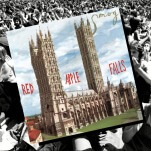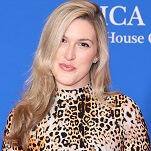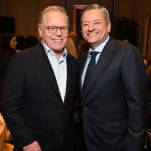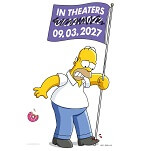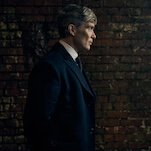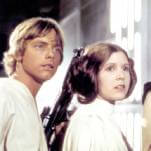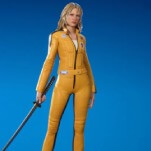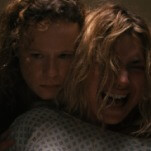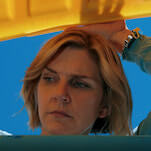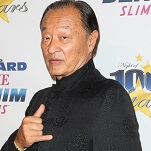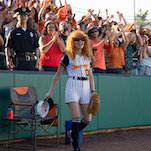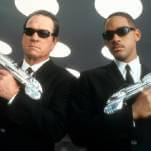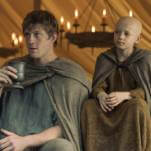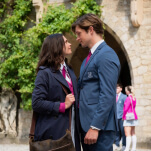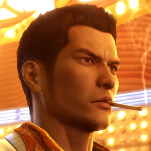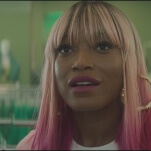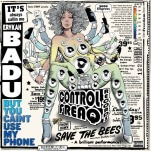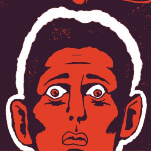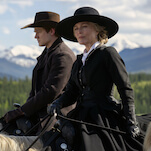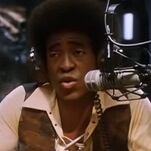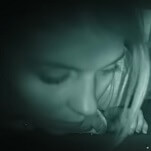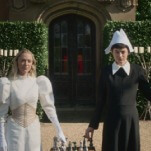Cut the vagina subplot: 12 great movies made from bad books
These 12 films spun gold from books of quality middling to downright crappy
Image: Illustration: Jimmy Hasse
For as long as cinema has looked to literature for inspiration, there’s been someone around to study the results and helpfully remind all of us that “the book was better.” Usually, they’re right: Moving a story from page to screen doesn’t tend to improve it, if for no other reason than the things you might love about a novel—its prose, the interior voice of its characters, the nuances of a narrative that sprawls for hundreds of pages—can easily get lost in translation. Every once in a while, though, someone manages to win one for the younger art form and reverse the curse of adaptation, making a great movie from a not-so-great book. According to some of those who caught the world premiere at South By Southwest last weekend, that’s the case with Steven Spielberg’s reportedly superior take on the widely derided Ernest Cline bestseller Ready Player One. And it’s definitely the case for the 11 films below, all based on books of quality middling to downright crappy. This time, the movie wasn’t just better. It was transformative, spinning gold from straw. Really lousy straw, actually.
1-2. Dr. Mabuse, The Gambler (1922) and The Testament Of Dr. Mabuse (1933)
Written in just 14 days, Norbert Jacques’ 1921 novel Dr. Mabuse Der Spieler would have ended up as just another forgotten bestseller from the days of Fu Manchu if the German director Fritz Lang hadn’t transformed its title character into one of the greatest, most multivalent villains in film. Eliminating Jacques’ long-winded inner monologues by necessity, Lang and his co-screenwriter (and then-wife), Thea Von Harbou, also ditched the evil doctor’s motivation—a plan to create his own country in the jungles of Brazil—and added a mastery of disguise to his already considerable powers of manipulation. Thus, Jacques’ conservative potboiler about a hypnotist who exploits the decadent nightlife and Freudian fads of Weimar-era Germany became the sprawling Dr. Mabuse, The Gambler, a timeless (and, considering the era, very prescient) silent masterpiece of pulp and paranoia, menaced from within by an authoritarian specter. Jacques’ inability to replicate the novel’s success eventually paved the way for Lang’s nightmarish sequel, The Testament Of Dr. Mabuse, loosely based on an unfinished manuscript for a follow-up novel. Jacques’ Mabuse was a profiteer of German defeat and post-war disorder (and a psychiatrist to boot), which made him a close relation of the bogeymen of Nazi propaganda. Dropping many of Jacques’ plot ideas, including a gas attack with obvious echoes of World War I, Lang offered a more supernatural Mabuse and an ambiguous allegory of spreading fascism. Adolf Hitler became chancellor shortly after Lang wrapped production, and the film was subsequently banned by the Ministry Of Public Enlightenment And Propaganda. [Ignatiy Vishnevetsky]
3. Dr. Strangelove Or: How I Learned To Stop Worrying And Love The Bomb (1964)
A stickler for research, Stanley Kubrick was already in the process of developing a film about the Cold War arms race when a defense consultant recommended that he read Red Alert. Written under a pseudonym by a Royal Air Force flight controller named Peter George, this straightforward thriller—notable more for its technical accuracy than its prose—would become the unlikely source material for Dr. Strangelove, the definitive dark comedy of the era of nuclear deterrence and mutually assured destruction. Recognizing the absurdity of the East-West power struggle and the comic potential of George’s premise—a global crisis set into motion by a delusional, paranoid Air Force general—Kubrick began to reimagine the story as a satire after buying the rights for a piddling $3,500. The studio’s bizarre insistence that it would only finance Kubrick’s next film if Peter Sellers played at least four major roles (reduced to three after an on-set injury) only pushed the project further into the farcical. Successive drafts turned George’s stock characters into caricatures and introduced the figure of Dr. Strangelove (Sellers), an ex-Nazi scientist equally inspired by the villains of Fritz Lang films (see above) and by real-life figures like Wernher Von Braun and Herman Kahn. Surprisingly, George not only collaborated with Kubrick and satirical novelist Terry Southern on the script, but also went on to write a novelization, Stanley Kubrick’s Dr. Strangelove. [Ignatiy Vishnevetsky]
4. The Graduate (1967)
In both Mike Nichols’ film The Graduate and Charles Webb’s 1963 novel of the same name, Benjamin Braddock is a newly loosed college boy made good who experiences the onset of that suburban ennui that crept across the manicured lawns of midcentury America. Their stories are exactly the same: Benjamin, bored and prematurely jaded, has an affair with the older Mrs. Robinson; falls in and out of infatuation with Mrs. Robinson’s daughter, Elaine; then finally disrupts Elaine’s wedding, stealing her away to a future neither are sure they even want. But Webb’s novel conveys Benjamin’s alienation through flat prose that’s largely built on stifled snippets of people talking around and around each other; he captures the banality of existence that Benjamin is rejecting by faithfully recreating it. Nichols’ film, by contrast, is able to draw so much more from meaningful silences; Simon & Garfunkel’s melancholy, mood-defining jangles; and all those now-iconic images: Benjamin lazily staring up at his father as he lounges in the family pool; Benjamin’s desperate rattling of a church window at Elaine’s wedding; the two young lovers, smiles fading as they escape in the back of a bus to nowhere. Most crucially, Dustin Hoffman’s stammering, star-making performance transforms Benjamin from a frustratingly self-serving dick into the kind of self-serving dick you can empathize with. Between movie and book, only one lets you understand Benjamin’s emptiness. The other just leaves you feeling it. [Sean O’Neal]
5. Planet Of The Apes (1968)
It was producer Arthur P. Jacobs who saw the potential in Pierre Boulle’s La Planète Des Singes, snapping up the rights to the 1963 novel by the Bridge Over The River Kwai author (and former French secret agent) before it was even published. But it was Twilight Zone creator Rod Serling who recognized that Boulle’s book was really a protracted allegory about morality that “contained within its structure a walloping science fiction idea,” one that would go on to spawn a decades-spanning franchise thanks to a crucial, Serling-engineered twist. Boulle’s story takes place on a sister planet light years away, framed in the book by a pair of interstellar travelers discovering the journals of a French man who visited, then escaped the ape planet where humans had been driven underground. That man then returns home to find that centuries have passed and the same thing has happened on Earth. The big idea depicted in Serling’s original script—and retained in the final film—is that (sing it with us) it was Earth all along, and the rise of the apes was thus a direct result of man’s own hubris and carelessness. It’s a key change, transforming Boulle’s story (which also introduces familiar characters like Zira, Cornelius, Nova, and Dr. Zaius) from a wry parable into a real gut punch of a cautionary tale, one whose core message has gone on to sustain endless sequels, reboots, and imitators. And with apologies to Boulle, there’s just nothing in the book so memorable as Charlton Heston pounding sand, screaming, “You maniacs! You blew it up!” [Sean O’Neal]

